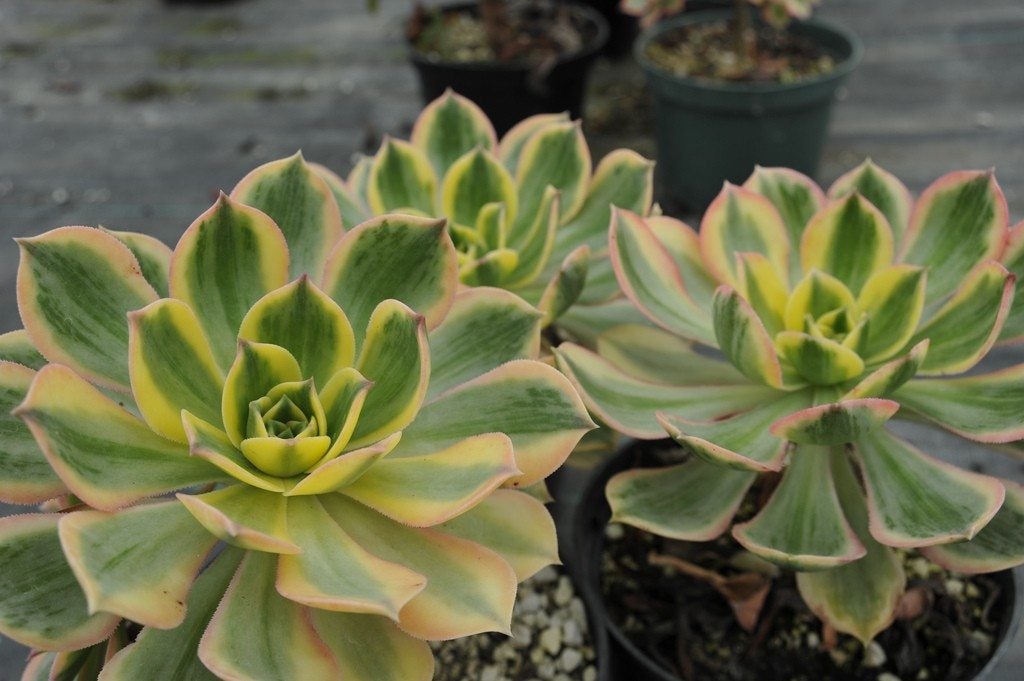Growing Aeoniums - Learn About Caring For Aeonium Plants


Aeoniums are fleshy leaved succulents that grow in a pronounced rosette shape. Growing aeoniums is easy in areas with few freezes. They can also grow indoors, in a sunny window where temperatures are toasty warm. Learn how to grow an aeonium plant for unique texture and form in both indoor and outdoor garden displays.
What Are Aeoniums?
Succulent plants have a special adaptive survival strategy for hot, dry locations. They come in a wide range of colors, textures, and sizes. What are aeoniums? These plants also have the fleshy leaved characteristic of succulents, where they store moisture. Unlike many other succulents, however, aeoniums have shallow root systems and cannot be allowed to dry out completely. Only the top few inches (8 cm.) of soil should be allowed to dry out when growing aeoniums. There are over 35 aeonium species, in a graduating range of sizes.
Aeonium Uses
Consider growing aeoniums as part of a cactus or succulent display. They do well in shallow pots with a mixture of cactus soil and peat. You can combine them with other plants such as aloe, agave, or jade plants. Place a thin layer of inorganic mulch such as ornamental rock around the plants and place in a sunny, warm location. For outdoor use, place them along sunny borders or in rockeries. In temperate or cooler zones, frost may kill the foliage and the rosette will fall off. If the plant is mulched it will grow anew in spring.
How to Grow an Aeonium Plant
Provide the plant with well-drained soil in a sunny location. They prefer temperatures between 40 and 100 degrees F. (4-38 C.). These succulents are very easy to grow from cuttings. You really just have to cut off a rosette and let the cut end dry out for a couple of days. Then set it in lightly moist peat moss. The piece will root quickly and produce a new plant.
Caring for Aeonium Plants
Aeonium care is remarkably easy. Plants in containers require more frequent watering than those in ground. Fertilize aeonium in containers once annually in spring when new growth commences. In-ground plants rarely need fertilizer, but may benefit from a light coating of mulch just around the base of the plant. Be careful not to pile it up around the stem or rot might set in. The most common problems when caring for aeonium plants are root rot and insects. Root rot is prevented by using clay pots with good drainage or checking soil percolation prior to planting. Keep the roots moist but never soggy. Good aeonium care also requires you to watch for pests. Mites and scale may attack the succulents. Combat these with horticultural soaps or neem oil. Be careful when using soap sprays, however. Spraying too frequently can cause discoloration and lesions on the skin of the plant.
Sign up for the Gardening Know How newsletter today and receive a free copy of our e-book "How to Grow Delicious Tomatoes".

Bonnie Grant is a professional landscaper with a Certification in Urban Gardening. She has been gardening and writing for 15 years. A former professional chef, she has a passion for edible landscaping.